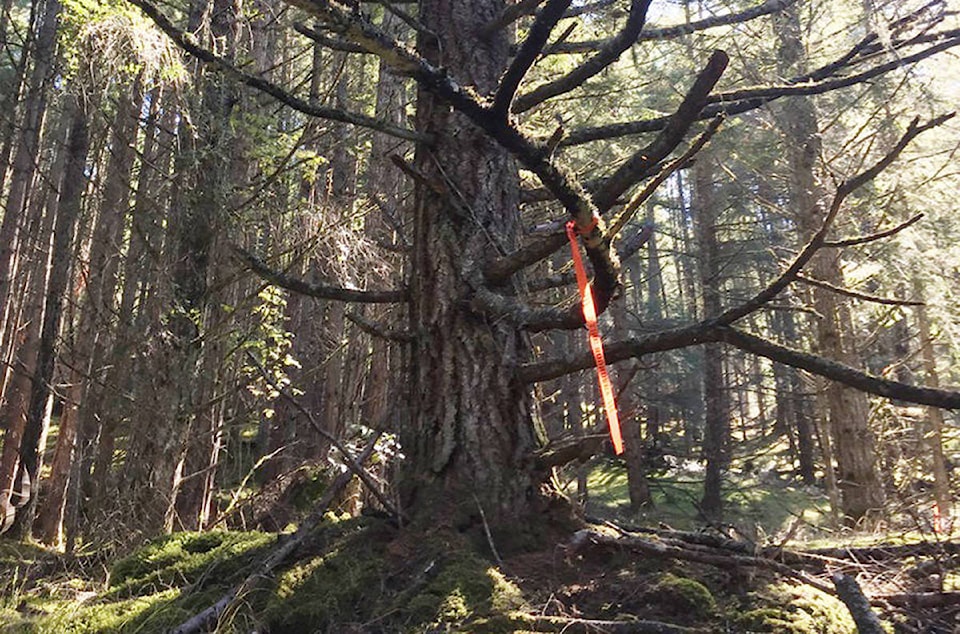The link “engage.gov.bc.ca ” provides access to the 19-page Interior Forest Sector Renewal Policy and Program Engagement Discussion Paper.
The online public engagement period runs from July 18, 2019 to Oct. 11, 2019 at 4 p.m.
Sections one and seven deal with forest tenures and reconciliation with First Nations in B.C. Since the forest industry is very global in nature it may be useful to see what is happening in other countries. I think the following 32-page report published in 2002 is a good start.
The paper “Who Owns the World’s Forests? Forest Tenure and public Forests in Transition” is written by Andy White and Alejandra Martin.
As the authors point out the statistics in the report should be used with caution since they are derived from only 24 of the many dozens of countries with forests and do not reflect the amount of forest land actively claimed by Indigenous and other local communities.
Read More: FOREST INK: Community forests have many advantages for rural communities
The percentages of forest in each tenure category are perhaps more reliable. For example, the global forest estate of 3.9 billion hectares has approximately 77 per cent of the world’s forest (according to national law) owned and administered by governments, at least four per cent is reserved for communities, at least seven per cent is owned by local communities, and approximately 12 per cent is owned by individuals.
The four largest players are the following: the numbers represent millions of hectares followed by the percentage that is government owned (in brackets). First is the Russian Federation 886 million hectares (100 per cent), followed by Brazil 423 (77 per cent), Australia 410 (70 per cent), Canada 389 (93 per cent) and U.S. 110 (37 per cent). Two countries are close to the U.S. — the Republic of Congo 109 (100 per cent) and Indonesia 104 (99 per cent).
While many countries have the majority of land in government ownership there are some important exceptions.
For example in the U.S. private individuals and firms own more than half of the forests, or 55 per cent.
The U.S. is joined by two other commercially important northern forested countries, Sweden and Finland at 70 per cent and 80 per cent respectively, and Argentina, where some 80 per cent of forests are also privately owned by individuals and firms. Other important exceptions are Mexico and Papua New Guinea, where indigenous and other local communities own some 80 per cent and 90 per cent of forests, respectively.
Although there are exceptions, governments in countries with large amounts of forest have traditionally chosen to transfer access rights and management authority to large-scale private forest industry through logging concessions. In most concessions, companies have long-term rights to access, manage the land, harvest timber and exclude the public. In return, firms typically promise to pay royalties and other fees to the government. One author estimated that in 1980 some 90 per cent of all industrial round wood is derived from logging concessions.
Unfortunately, in many countries few profits from concessions are reinvested in forest communities or social programs that aim to provide sustainable livelihoods to local people. Harvest levels are often unsustainably high and lead to boom-bust cycles in local development.
Read More: FOREST INK: Public encouraged to comment on interior forest sector renewal policy
This approach to public forest land management has often led to environmental degradation, social instability and insecurity, and additional financial burdens on cash-starved governments.
Most fundamentally, concession policy is founded on the notion that government ownership is the optimal — or at least the most adequate — form of forest tenure. The weight of evidence on illegal logging and corruption, along with the social consequences of the quick liquidation strategies practiced by many forest industries, are driving some countries to rethink and reform concession policies.
Jim Hilton is a professional agrologist and forester who has lived and worked in the Cariboo Chilcotin for the past 40 years. Now retired, Hilton still volunteers his skills with local community forests organizations.
Do you have a comment about this story? email:
editor@wltribune.com
Like us on Facebook and follow us on Twitter.
